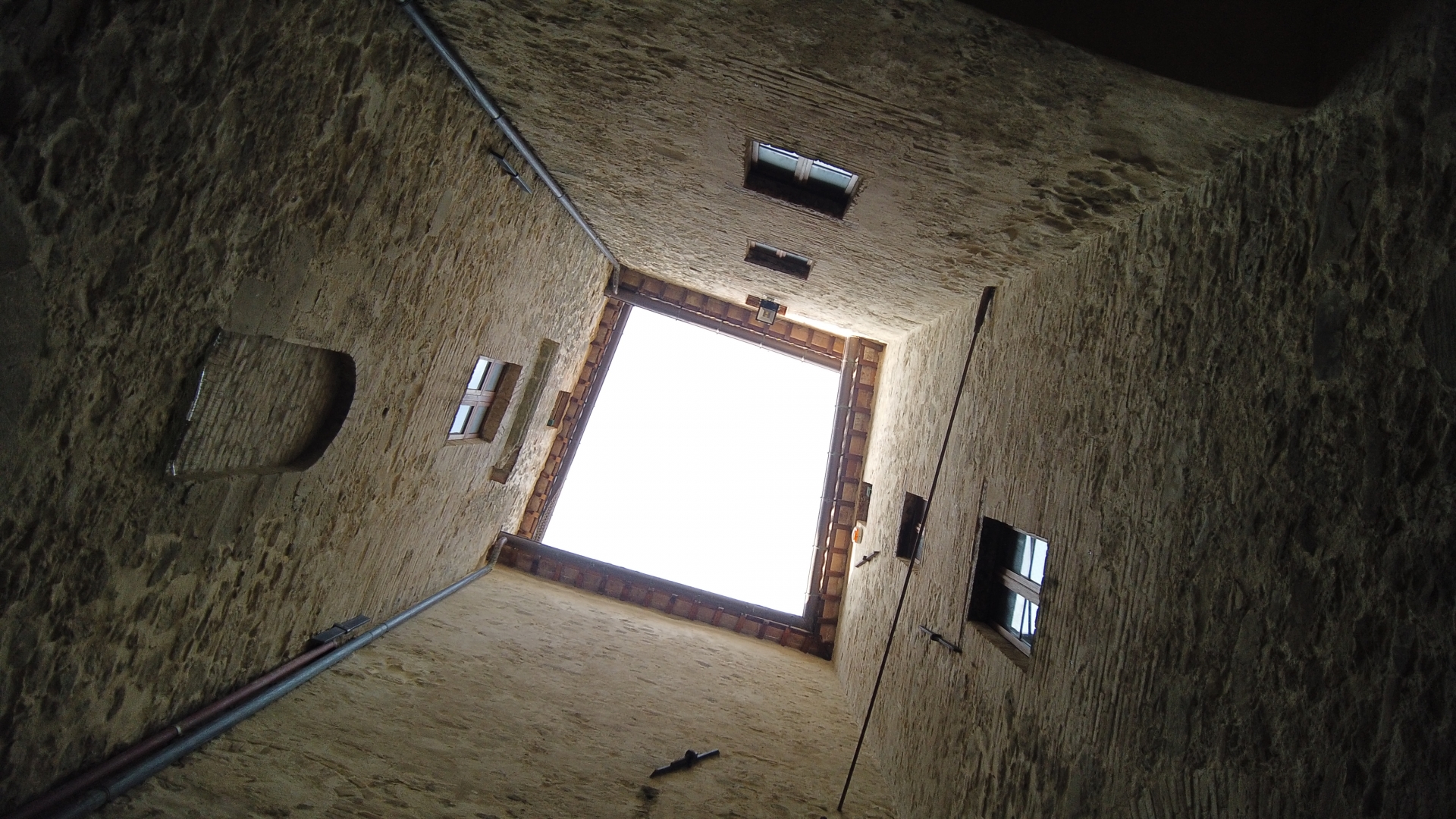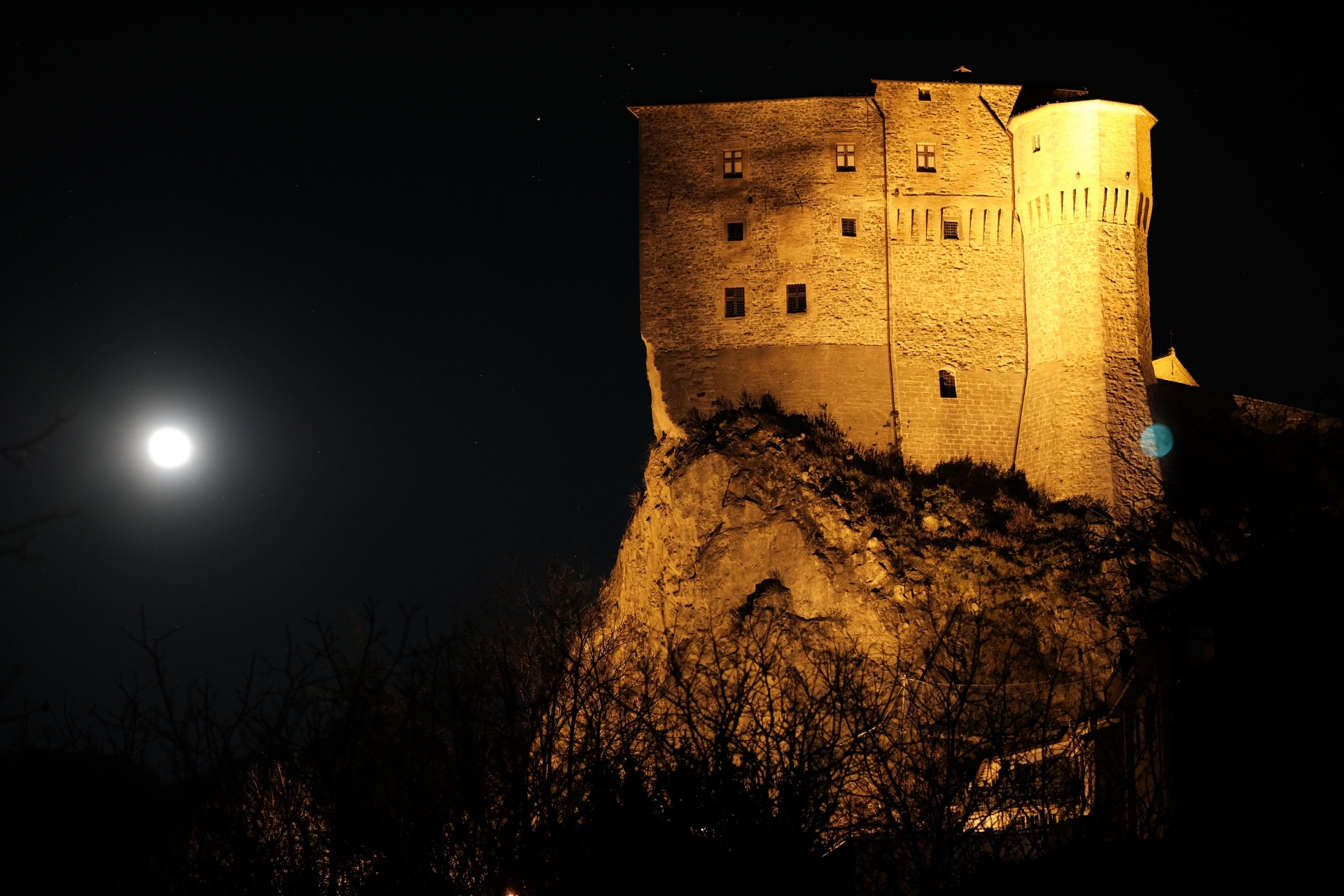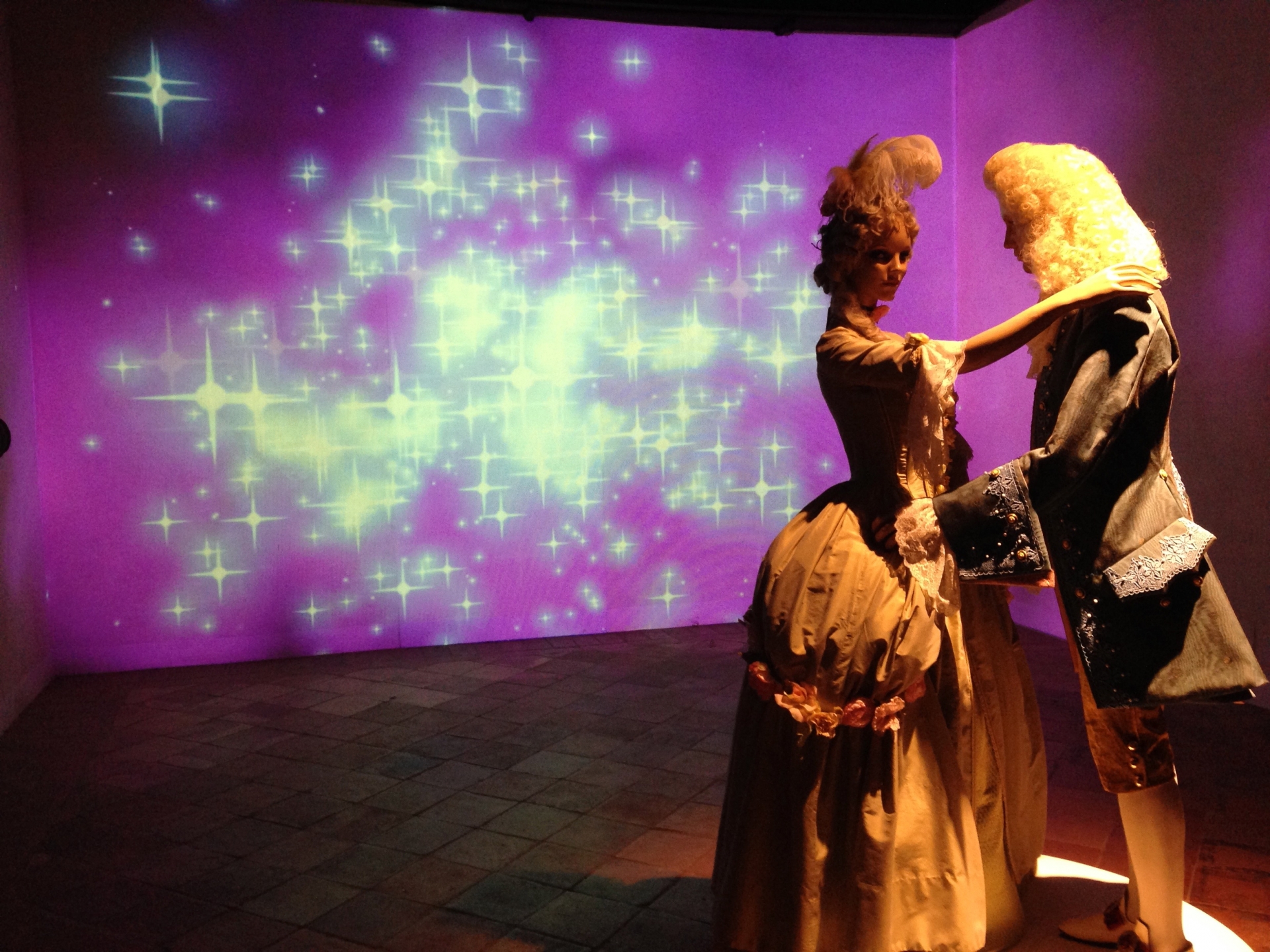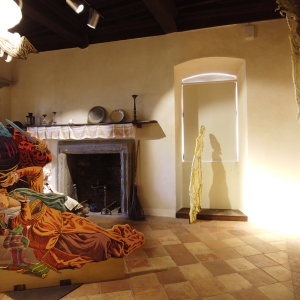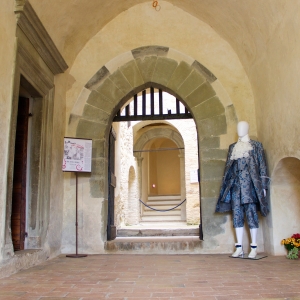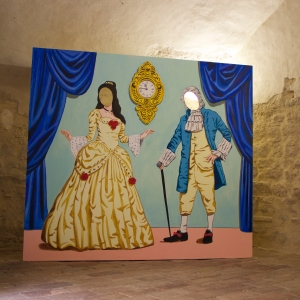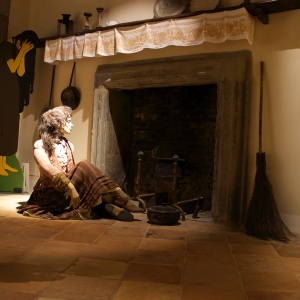Rocca Fregoso
A spectacular stronghold, located on the Sasso del Lupo or Pietra Anellaria, the Rocca di Fregoso is the monument that distinguishes Sant'Agata Feltria in Romagna: from the top of a natural cliff in the north-western part of the town, it dominates the Savio river valley below. It is famous for being considered the Rocca delle Fiabe (Fairy Tale Fortress): a picturesque road that is not for vehicle access, after passing the wall of houses, leads to a small green space in front of the castle which rises up out of the diachronic unification of five buildings around a small internal courtyard, clearly detectable by the variations in construction techniques and by the different materials used over the centuries for expansions and adaptations.
The cliff walls - gray marly sandstone - are overhanging for three quarters of the perimeter and the maximum difference in height from the top to the foot of the building is 30 meters.
The walls of the Fortress are made with blocks of various origins and kinds, especially sandstone, and were installed on mainly parallel planes. They are of variable thicknesses, ranging from a minimum of 0.50 meters to a maximum of 3 meters, thus suggesting the use of several construction techniques.
The Fortress is crowned by a series of brick corbels above which there is a work of masonry with a thickness varying from 0.50 to 0.70 meters, in quarry and river stones.
The building is made up of five levels: the basement, the mezzanine, the first floor, the second floor or floor of the corbels and the attic.
The basement floor consists of two cisterns and four rooms. All the rooms are partially plastered and have no flooring, covered by barrel vaults made of both stone and brick.
A bit of history
The Rocca was probably built around the year 1000 by the Cavalca family of the Counts of Bertinoro, who at the time dominated the area by ecclesiastical investiture. In about 1100 it was enlarged by Altruda Frangipani, also from the Cavalca family: The noblewoman guided the village with justice and wisdom, making people forget her son’s and husband’s misdeeds; they were men with a warrior character and dedicated to battle. In 1125 the Rocca was mentioned in a seal of Pope Honorius II.
After the death of the Counts of Bertinoro - who governed Sant'Agata Feltria from the end of the 900s to the end of the 1100s - the Rocca passed to the Archbishops of Ravenna and, later, to the Faggiolanis, Guidis, Tarlatis, Brancaleonis, Malatestas and Montefeltros.
And it is precisely with the advent of this last family that the original fortress underwent the first radical transformations. In the second half of the 1400s, in fact, Federico da Montefeltro entrusted the works of modernizing the fortresses under his dominion, including that of Sant'Agata, to the famous military architect Francesco di Giorgio Martini from Siena; this was the first change from a war fortress to that of a princely residence that it was to become with the Fregosos. Meanwhile, Agostino Giovanni Fregoso took refuge with the Montefeltros to escape the climate of hostility that had been created in Genoa. Federico, far-sighted as always and thanks to his subtle diplomatic ability, understood the importance of subjecting himself to the friendship of such an important family so much so that he granted his daughter Gentile Feltria in marriage to Agostino Fregoso, and she brought him a dowry of twelve castles and as many territories, including also Sant'Agata Feltria. Four children were born from the happy union between Agostino Fregoso and Gentile Feltria: Cardinal Federigo, Margherita, Costanza and Ottaviano.
It seems that the fifteenth-century works incorporated the ancient and original complex. The Rocca was gradually enlarged and embellished with works of art, and thus it became an imposing defensive structure on the outside, but elegant on the inside. The purpose of the work was therefore to transform an old military fortress into a welcoming and sumptuous fortified residence destined for the daughter of Federico and the nobleman Agostino Fregoso. Between the end of the 1500s and the beginning of the 1600s with the Fregosos, from which it takes its name, the building underwent a further restructuring; in fact, the complex, having lost its strategic importance due to the changed political balance, was transformed into a residential building, definitively losing its military aspect. The Rocca was gradually enlarged, raised by at least two levels above the fifteenth-century crenellations for the creation of the main floor; the internal distribution was totally redefined with the addition of a new stairway and embellished with works of art, as can be admired from what little has remained, such as the beautiful coffered ceilings on the first floor, the large Renaissance fireplaces, the octagonal chapel with sixteenth-century frescoes.
In 1660 Saint Agata and its castle returned under the dominion of the Church. Since then, the fortress continued to be used as a residence at least until 1781 when it was transformed into a convent; on that occasion, the conventuals built the church dedicated to Saint Frances of the Rose, placing it up against the fortress walls. In the last two centuries the Rocca was used as a Convent of the Conventual Minor Friars, as a high school, as a prison, as a Magistrate's Court and finally as a civilian residence.
Today, the Rocca is disfigured due to the collapse of the upper part of the Main Keep, which happened on January 18th, 1835. Simonetto Fregoso’s small tower, where the chapel is, is well preserved. In 1877 further restoration work was carried out, due to the instability caused by the movements of the sandstone rock on which the building rests.
In 1951, due to heavy rains, dangerous cracks began to appear along the sandstone rock to the north, culminating in 1961 with the detachment of an enormous mass of rock about thirty meters high which left the northern corner of the Rocca suspended.
In 1974, after the restoration work, a museum was set up which collects the documents of the historical archive of Agata rectorate, furniture and rare objects from the early 1900s, a collection of graphic works ranging from manuscripts to ex libris, from advertising lithographs to valuable original prints by Italian and European authors.
In January 2005 further restoration was carried out on the floors and roof of Rocca Fregoso which remained closed for about two years.
Source: Rocca delle Fiabe (The Fortress of Fairy Tales)


